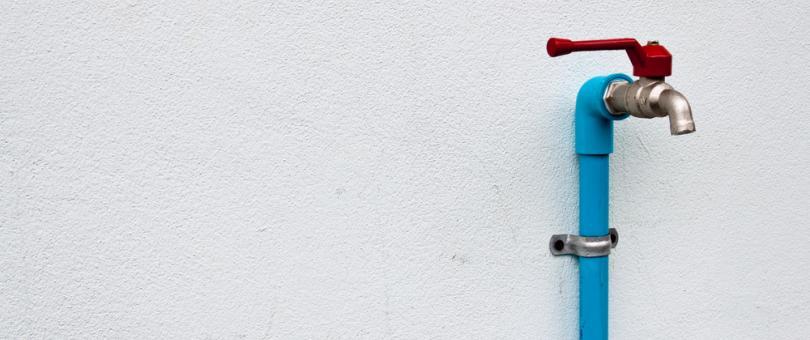We consider it as a big deal when our house’s plumbing goes wrong? A clogged sink or a toilet is enough to get us mad. And the stink it generates gets us off our feet and call a local plumber immediately. But most of us put off outdoor plumbing tasks as if they’re not so immediate.
The truth is they’re. A small leak on the roof can damage the entire roof causing you damage worth thousands of dollars. The problem in the sprinkler system can cause a significant water explosion that can injure you if it happens while you’re around. The sewer blockage can lead to all those nasty indoor plumbing issues that you dread.
I think you got the point. Recognizing and fixing the outdoor plumbing issues is as important as dealing with the other ones. That’s why I decided to write about all the major issues and on how to proceed to get them fixed.
Let’s deal with the most serious one first.
1. Sewer Blockage
Sewers connect your house’s waste water to the sewerage system that runs underground. These sewer pipes carry all the waste that you flush down your toilet or put into the sink. Apparently, it’s connected to the entire water system of your house, and if it goes wrong, your home’s entire plumbing is in trouble.
Signs of sewer blockage
The most basic signs of sewage problems are the water backups that can come out of the drains, maybe through the sink, bathtub or toilet. If you can hear a gurgling sound and the source seems to be the drains, it’s also a big enough sign for sewer blockage.
Now, you might be thinking that all of this could happen due to a simple clog as well. Maybe your sink is clogged, and that’s why it’s backing up. What’s the sure shot sign of sewer clog? If this thing is happening with your entire house’s plumbing – toilets, sinks, and bathtubs, it’s because of a sewerage issue.
Causes of sewer blockage
Let’s talk about what can be the reason behind this problem. There are two primary reasons.
1. Improper disposal: If you’re flushing things down your toilet that shouldn’t be, congratulations! You have a clog and hundreds of dollars of extra expenditure this month due to your actions. The only thing that should go down the drains is waste water, human excreta, and tissue papers that are safe for disposal.
ALSO READ: 9 things you’re doing everyday to damage your household plumbing
Not all the tissue papers or napkins available out there completely dissolve in water when flushed down, and they’re bound to get stuck in the pipes. Things like sanitary napkins, vegetable oil, and food materials can also contribute to it.
2. Tree roots: Another reason why the sewer pipes can get blocked is the tree roots. As you already know, sewer pipes go underground, and tree roots can easily grow and block these. It is the very common thing in old homes as tree roots get plenty of time to grow inside. Gradually, they start blocking the sewage pipes.
How to deal with it?
Obviously, it’s a serious issue and shouldn’t be taken lightly. You need to call a licensed plumber to check the blockage and fix it. The plumber will first use a cable to inspect the problem. If that fails, they will do a camera inspection and then figure out the problem. Once they know what’s causing the leak, and where, they can easily fix it for you.
Remember that sewer water is a very dangerous plumbing problem. A drain water backflow can contaminate your house with some disease-causing bacteria & water damage restoration takes a significant sum of money. In all case, you must avoid getting into a possible situation where water enters your house through backflow. Get it fixed before it happens.
2. Plumbing issues in the pool area
If you’ve been noticing water around your pool, it’s a sign of trouble. The water can be due to a problem with plumbing near your pool, or it could be the problem with the entire pool itself. The latter is a severe issue. So, you must take necessary precautions and call up a plumber immediately to inspect the real cause behind that extra water.
3. Problems with the hose bibs
If you don’t know what hose bibs are, here’s the answer: these are what supply water to the outdoor plumbing fixtures. These are plumbing connections that are quite susceptible to damage. They may break due to wear and tear or due to frosting in winter.
A leak or a crack is serious enough issue as this well affect the entire water supply to the outdoor area. You must also keep in mind that replacing or repairing hose bibs require proper expertise. DIYing it isn’t a good idea.
4. Issues with the sprinklers
Usually, the people who have a kitchen garden or a big lawn love to invest in a sprinkler system but these are tough to maintain. They can easily get damaged. A small leak would give away the existence of a problem and then you can yourself dig up the area and detect where the damage is. If you’re unsure on how to do that, you can call up for sprinkler repair.
It’s also a good idea to not use the sprinkler system for irrigation purpose until it is working completely fine. Not doing so may cause unexpected damage to your lawn or even to you.
5. Always winterize the faucets
In winters, the outdoor faucets run the greatest risk of getting frozen. Now, these frozen pipes can be dangerous. We all had heard about those terrible incidents when a frozen pipe blew up and wasted a lot of water. The water stream can be hazardous to humans or pets as well due to its high pressure.
Therefore, it’s always good to winterize your pipes that are outside, take necessary measures to prevent frozen pipes and keep contact number of an emergency plumber in your emergency contacts list. Preparing for winter is necessary. Don’t miss it.
I have listed the major outdoor plumbing issues and how to deal with them, all in one post. I hope you enjoyed reading it and use it for your good. Let me know if you think this would help you in future.


